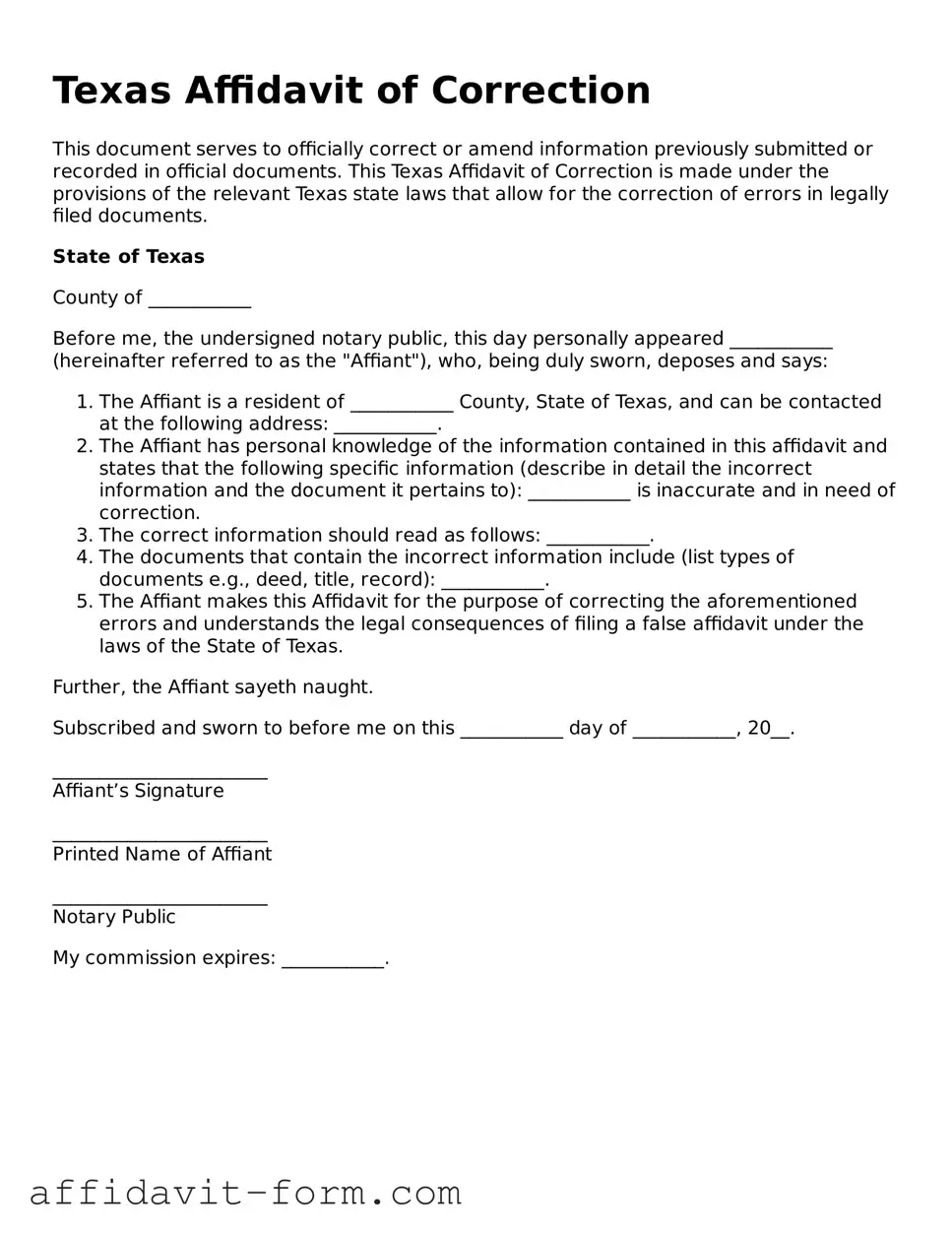The Texas Affidavit of Correction form is similar to several other types of legal documents that are used to amend or clarify the information on official records. These forms are integral in ensuring that records accurately reflect the correct details, which is a cornerstone of both governmental and private sector record-keeping. Among these documents, the similarities are found in their purpose, structure, and the procedural requirements for their use. Yet, each has its own specific applications and fields where it is most relevant.
Amendment to Birth Certificate: Like the Affidavit of Correction, an Amendment to Birth Certificate is used to correct or update information on a vital record. Both forms require the submission of evidence to support the requested change and must be processed by a governmental entity. However, the Amendment to Birth Certificate is specifically targeted at changes to birth records, such as correcting a name, birthdate, or gender marker. This contrast highlights how each form is tailored to its specific field of application, though they operate under similar principles of correcting official records.
Deed of Correction: This document shares a purpose with the Texas Affidavit of Correction, as both aim to correct mistakes in previously filed documents. A Deed of Correction, however, is used exclusively in the context of real estate to address any inaccuracies in property deeds, such as errors in the legal description, spelling mistakes in names, or incorrect property addresses. While both documents serve to rectify mistakes, the Deed of Correction is specific to real estate transactions, underscoring the importance of precision in legal documents pertaining to property.
Vehicle Title Correction Form: Similar to the Affidavit of Correction, this form is used to correct information on a vehicle’s title. Mistakes that commonly need correction include misspelled names, incorrect vehicle identification numbers (VIN), or wrong model years. Both forms are critical in ensuring the accuracy of ownership and identification records. The Vehicle Title Correction Form is particularly significant in the context of buying, selling, or insuring vehicles, highlighting its role in the broader ecosystem of vehicle administration and regulation.
In essence, while the Texas Affidavit of Correction, Amendment to Birth Certificate, Deed of Correction, and Vehicle Title Correction Form each have distinct applications, their shared goal is to maintain the integrity of official documents through the correction of inaccuracies. This ties back to the overarching principle that accurate records are fundamental to legal processes, property rights, identity verification, and many other critical aspects of society.
